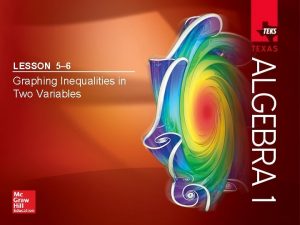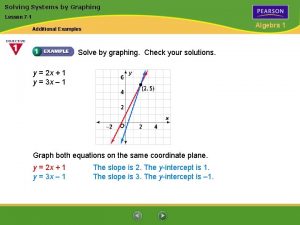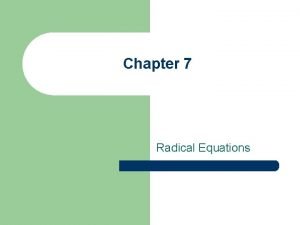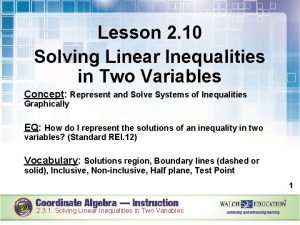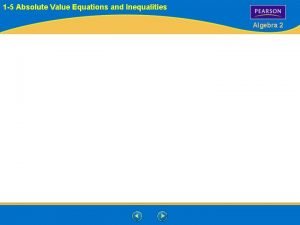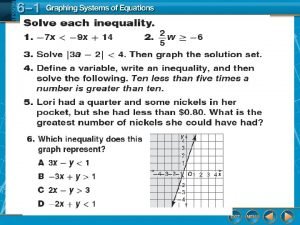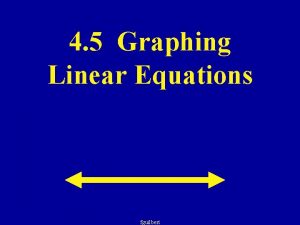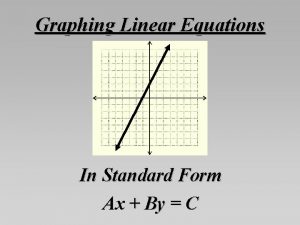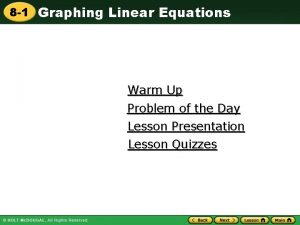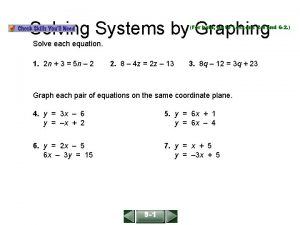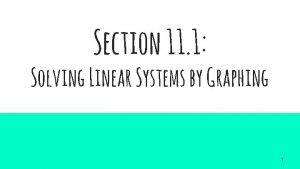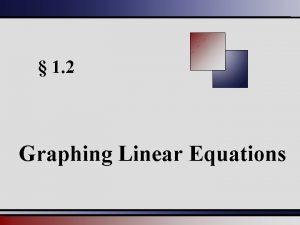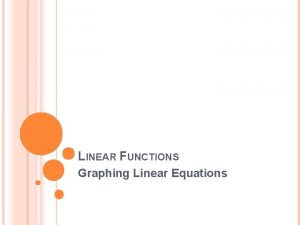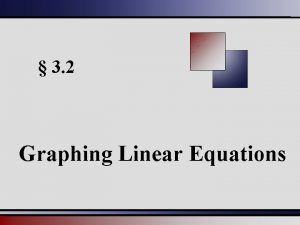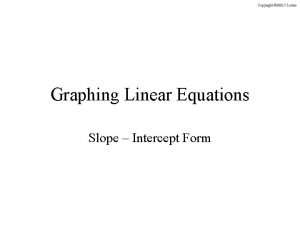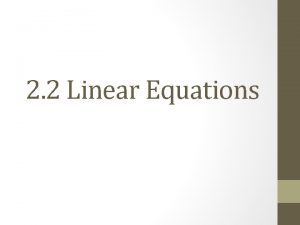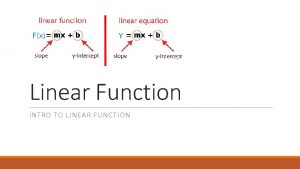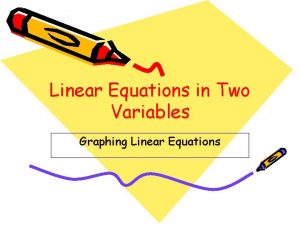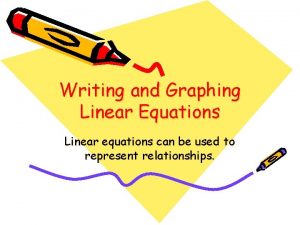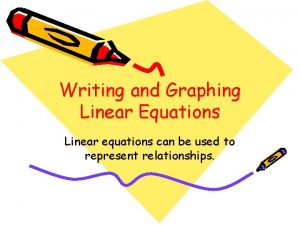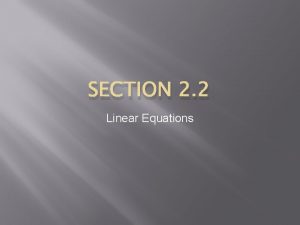Lesson 34 Graphing linear equations 2 Linear function











- Slides: 11

Lesson 34 Graphing linear equations 2

Linear function • A function with a constant rate of change is called a linear function. • Every non-vertical line represents a linear function. • To determine whether a graph is the graph of a function, you can use the vertical line test.

Identifying graphs of linear functions • • • To determine if a graph represents a linear function, find the rate of change between sets of points. If the rate of change stays the same , it is a linear function. The vertical line test alone does not always tell if a graph represents a function. A curved line could pass the vertical line test , but not have a constant rate of change.

3 common forms of linear equations • Standard form • Slope-intercept form y = mx+b m is the slope and b is the yintercept • Point-slope form y-y 1=m(x-x 1) m is the slope and (x 1, y 1) is a point the line on Ax + By + C A and B are both not 0

Graphing given standard form • • • You can make a table of values or Use x-intercept and y-intercept or Change to slope-intercept form

examples • x+3 y = 12 • -3 x+4 y = -4 • -2 x + 5 y = -20 • 3 x + 2 y = 12

Graphing given point-slope form • • • Graph y-3=-1/2 (x+2) Point slope form y-y 1= m(x-x 1) So y 1 = 3 , m = -1/2 , x 1= -2 Point on the line is (x 1, y 1) = (-2, 3) Plot this point and then use the slope to find another point on the line

Parent function • • • The most basic linear function is y= x All other linear functions are transformations of y = x

Transformations of f (x) = x • • • -f(x) is a reflection over the x -axis f(x) + c is a vertical shift c units up, if c is positive, f(x) + c is a vertical shift c units down, if c is negative c f(x) is a vertical stretch by a factor of c , if c>1 c f(x) is a vertical compression by a factor of c , if 0<c<1 See examples p. 248

Horizontal and vertical lines • Let b be any constant • y = b is a linear function, whose graph is a horizontal line (it crosses the y-axis) and has a slope of 0 x= b is not a function, it is a vertical line with an undefined slope (it crosses the xaxis) •

 5-6 graphing inequalities in two variables
5-6 graphing inequalities in two variables Lesson 7 solve systems of equations by graphing
Lesson 7 solve systems of equations by graphing Lesson 7 - graphing radical equations and inequalities
Lesson 7 - graphing radical equations and inequalities Lesson 2-1 graphing two-variable equations
Lesson 2-1 graphing two-variable equations Lesson 4-2 absolute value inequalities
Lesson 4-2 absolute value inequalities 6-1 graphing systems of equations
6-1 graphing systems of equations 4-5 graphing linear equations
4-5 graphing linear equations Graphing linear equations definition
Graphing linear equations definition How to graph equations in standard form
How to graph equations in standard form Graphing linear equations vocabulary
Graphing linear equations vocabulary Lesson 9.1 solving linear systems by graphing answer key
Lesson 9.1 solving linear systems by graphing answer key 11-1 solving linear systems by graphing
11-1 solving linear systems by graphing
